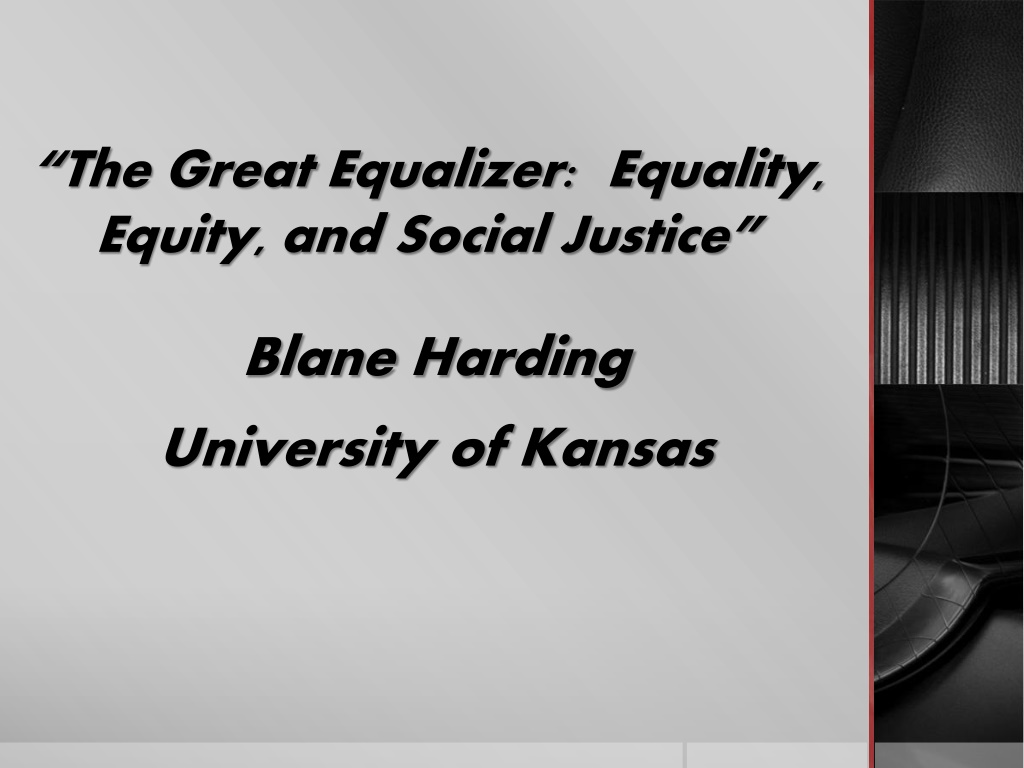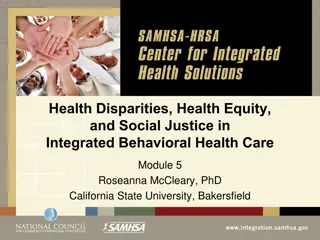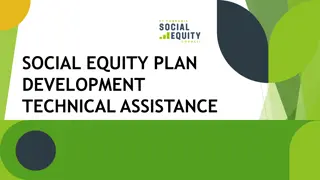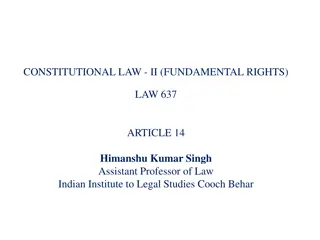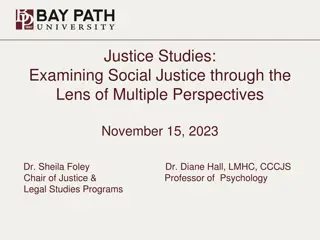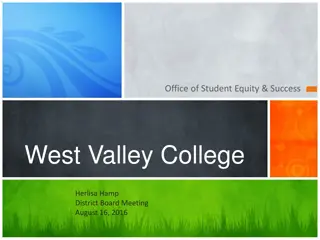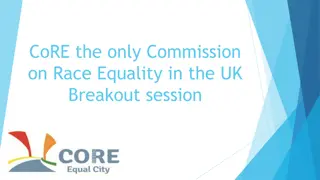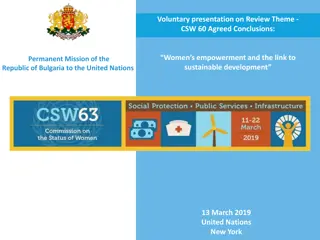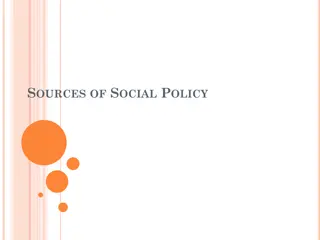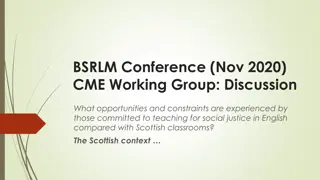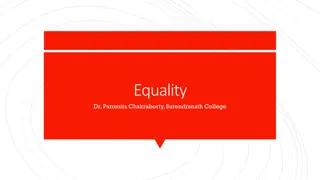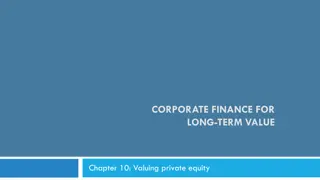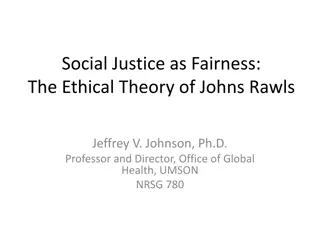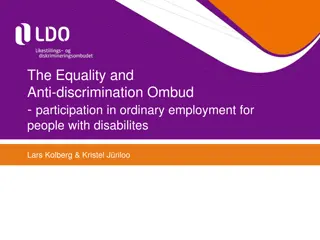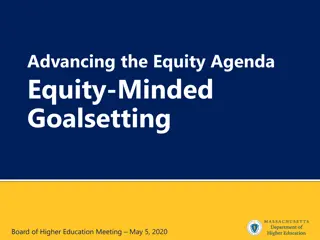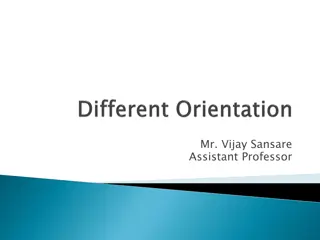Exploring Equality, Equity, and Social Justice
This content delves into important topics such as the impact of diversity, privilege, and the need for inclusivity in society. It discusses the significance of recognizing privilege, understanding marginalized groups, and taking action to combat inequalities. The inclusion of diverse viewpoints sparks creativity and fosters open dialogue, highlighting the value of addressing social disparities for a more just world.
Uploaded on Sep 15, 2024 | 0 Views
Download Presentation

Please find below an Image/Link to download the presentation.
The content on the website is provided AS IS for your information and personal use only. It may not be sold, licensed, or shared on other websites without obtaining consent from the author. Download presentation by click this link. If you encounter any issues during the download, it is possible that the publisher has removed the file from their server.
E N D
Presentation Transcript
The Great Equalizer: Equality, Equity, and Social Justice Blane Harding University of Kansas
We believe college can be a reality for everyone, no matter your income or background. It's a matter of finding good information, the right people to help and planning wisely.
IMPACT OF DIVERSITY Psychologist Charlan Nemeth showed that the mere presence of a minority viewpoint on a work team stimulated creativity among all the members by forcing reexamination of basic assumptions and by encouraging more open and frank dialogue.
Privilege A right or immunity granted as a peculiar benefit, advantage, or favor. A right or benefit that is given to some people and not to others. The advantage that wealthy and powerful people have over other people in a society. A special advantage, immunity, permission, right, or benefit granted to or enjoyed by an individual, class, or caste. The advantages and immunities enjoyed by a small usually powerful group or class, especially to the disadvantage of others. The principle or condition of enjoying special rights or immunities.
We need to ask ourselves: What does it mean to be privileged? Who tends to be marginalized? What does it mean to be marginalized? Ways we tend to deny that privilege is occurring? What happens when one group is privileged over another? How can we take action to interrupt these cycles of oppression and inequality?
ACCESS A means of approaching, entering, exiting, communicating with, or making use of. The ability or right to approach, enter, exit, communicate with, or make use of: has access to the restricted area; has access to classified material. Freedom or ability to obtain or make use of something.
Universal Access to Education All people to have equal opportunity in education, regardless of their social class, ethnicity, background or physical disabilities. Professors and instructors at the college level shoud rethink methods of facilitating universal access in their classroom. Encourages a variety of pedagogical approaches to accomplish the dissemination of knowledge across the diversity of social, political, cultural, economic, national and biological backgrounds.
SOCIAL JUSTICE The practice of promoting and protecting human rights and responsibilities, with a particular emphasis on the economic and social rights of society s most vulnerable groups - Human Rights Resource Center
WHY SOCIAL JUSTICE ? Inequality is the status quo. Inequality in access to resources. Inequality in securing human rights and safety. Inequality in freedom from discrimination. Reducing inequality is both morally right and pragmatically necessary.
Key Themes in Social Justice Making the world better Equity of opportunity Equality of treatment Fairness Appreciating differences Giving voice Power dynamics Asking questions Empathy through multiple perspectives
Key Elements of Social Justice Multiple perspectives. Examining root causes. Empowering the disenfranchised. Goal: to change the system. Connecting to individuals lives. Individual ownership and leadership.
PAULO FREIRE It is impossible to talk of respect for students, for the dignity that is in the process of coming to be, for the identities that are in the process of construction, without taking into consideration the conditions in which they are living and the importance of the knowledge derived from life experience, which they bring with them to school. I can in no way underestimate such knowledge. Or what is worse, ridicule it. Paulo Freire, Pedagogy of Freedom, 1998
Social Justice Thinking Transformative Education Transformative education (i.e., Education is part of the political- social process; education reflects social ideologies). Equity (i.e., Conviction to and belief in equitable treatment; takes into account individuals of diverse races, genders, social classes, languages and cultures; critical of inequality and marginalizations).. Equal educational opportunities for all (i.e., Belief that all can achieve to full potential; provides access to challenging academic curriculum; inclusive). Student -centered (i.e., critical pedagogy, reflective practice, teachers as students/ students as teachers; focuses content & process). Critically examining Culture, including my own and how they come to be. (i.e., Deep reflection regarding assumptions, values, beliefs; critically examines whiteness .) Broad outcomes and multiple assessments (i.e., Follows growth from where they started; solutions oriented after identifying a problem; builds coalitions through valuing and integration).
ITS NOT THE FIGMENT OF THE PIGMENT BUT THE ENIGMA OF THE STIGMA
BARRIERS/CONCERNS Lack of college preparation and basic academic skills. Stereotypical attitudes, expectations, and images held by college personnel toward these students Lack of role models on campus representing their individual groups Limited coping skills Lack of fit on some campuses resulting in isolation Limited or ineffective multicultural training from campus personnel Curriculum that does not reflect their experiences or include their histories Lack of campus support systems to address their unique needs Enrollment later in life as nontraditional students Enrolled as part-time students Families may have limited support or understanding of higher education
RESPONSIBILITIES A commitment to the whole student. Recognition and appreciation of individual differences. A commitment to facilitate student development, success, and learning. The ability to provide students access and opportunity. Adequate ongoing multicultural advisor training. Building a sense of community on campus for targeted groups. Increased awareness of demographic trends in society.
